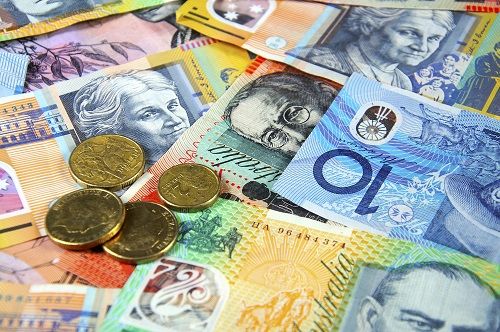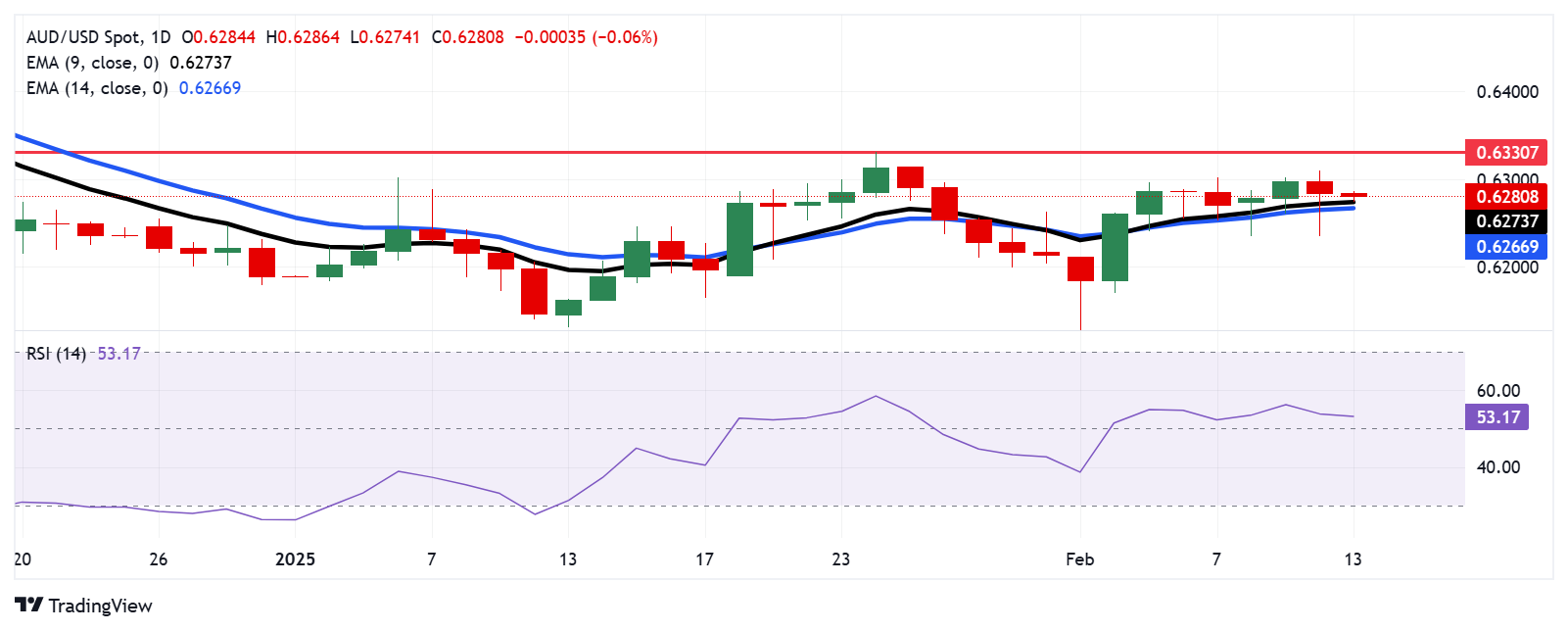Australian Dollar struggles despite a rise in Consumer Inflation Expectations

The Australian Dollar faces headwinds due to increased risk aversion.
Australia’s Consumer Inflation Expectations rose to 4.6% in February from 4.0% prior.
The US Dollar may gain strength as Fed Chair Jerome Powell signaled there is no urgency to cut rates.
The Australian Dollar (AUD) continues to decline against the US Dollar (USD) on Thursday, struggling despite a rise in Australia’s Consumer Inflation Expectations, which increased to 4.6% in February from 4.0% previously.
The AUD/USD pair remains under pressure due to US President Donald Trump’s 25% tariff hike and Federal Reserve Chair Jerome Powell’s signal that the central bank is in no rush to cut interest rates further. Adding to the strain, Trump’s trade adviser, Peter Navarro, criticized Australia on Tuesday, accusing it of "killing the aluminum market" just a day after Trump signed executive orders imposing import tariffs on certain metals. Australia is actively seeking exemptions from these new tariffs, with Trump previously stating he would give "great consideration" to the request due to the trade imbalance between the two nations.
Meanwhile, expectations for a Reserve Bank of Australia (RBA) rate cut are rising. With the central bank currently maintaining a 4.35% cash rate, traders widely anticipate a potential reduction at the February meeting. Market odds now indicate a 95% probability of a cut to 4.10%, as recent data suggests underlying inflation is cooling faster than the RBA had anticipated.
Australian Dollar declines amid rising odds of Fed staying hawkish
The US Dollar Index (DXY), which measures the US Dollar’s value against six major currencies, maintains its position near 108.00 at the time of writing.
Traders await US Consumer Price Index (CPI) inflation due on Wednesday. Headline US CPI inflation is expected to hold at 2.9% YoY, while core CPI inflation is forecast to tick down to 3.1% versus the last print of 3.2%.
In his semi-annual report to Congress, Fed’s Powell said the Fed officials “do not need to be in a hurry" to cut interest rates due to strength in the job market and solid economic growth. He added that US President Donald Trump's tariff policies could put more upward pressure on prices, making it harder for the central bank to lower rates.
A Reuters poll of economists now suggests the Federal Reserve will delay cutting interest rates until next quarter amid rising inflation concerns. Many who had previously expected a March rate cut have revised their forecasts. The majority of economists surveyed between February 4-10 anticipate at least one rate cut by June, though opinions on the exact timing remain divided.
The US Dollar receives support as the US Federal Reserve (Fed) is now expected to keep interest rates steady this year, following January’s jobs report released on Friday, which indicated slowing job growth but a lower Unemployment Rate.
US President Donald Trump decided to expand steel and aluminum tariffs by 25% to include all imports, nullifying trade agreements with key US allies, including Australia. The White House confirmed that all import tax exclusions had been removed and indicated that further action on microchips and vehicles would be considered in the coming weeks.
Federal Reserve Bank of Cleveland President Beth Hammack stated on Tuesday that keeping interest rates steady for an extended period will likely be appropriate. Hammack emphasized that a patient approach will allow the Fed to assess economic conditions and noted that the central bank is well-positioned to respond to any shifts in the economy, according to Reuters.
New York Fed President John Williams noted that US growth metrics are overall in a good place, specifically highlighting that US Gross Domestic Product (GDP) growth should hold steady this year and next.
China’s Consumer Price Index (CPI) grew at an annual rate of 0.5% in January, up from 0.1% in December and exceeding the market forecast of 0.4%. On a monthly basis, CPI inflation rose 0.7% in January, compared to December’s flat reading of 0%, though it fell short of the expected 0.8% increase.
Australian Dollar stays below 0.6300, inching toward nine-day EMA
The AUD/USD pair hovers near 0.6280 on Thursday, maintaining its position above the nine- and 14-day Exponential Moving Averages (EMAs) on the daily chart. This suggests that short-term price momentum is stronger. Additionally, the 14-day Relative Strength Index (RSI) maintains its position above the 50 mark, reinforcing a bullish bias.
The AUD/USD pair may test the psychological level of 0.6300, followed by the eight-week high of 0.6330, last reached on January 24.
The AUD/USD pair could test primary support at the nine-day EMA of 0.6273 level, followed by the 14-day EMA of 0.6266. A decisive break below these levels could weaken the short-term price momentum, potentially pushing the pair toward the psychological level of 0.6200.
AUD/USD: Daily Chart
Australian Dollar PRICE Today
The table below shows the percentage change of Australian Dollar (AUD) against listed major currencies today. Australian Dollar was the weakest against the Japanese Yen.
| USD | EUR | GBP | JPY | CAD | AUD | NZD | CHF | |
|---|---|---|---|---|---|---|---|---|
| USD | -0.09% | -0.10% | -0.14% | 0.02% | 0.07% | 0.06% | -0.05% | |
| EUR | 0.09% | -0.01% | -0.05% | 0.11% | 0.13% | 0.15% | 0.05% | |
| GBP | 0.10% | 0.00% | -0.06% | 0.11% | 0.16% | 0.16% | 0.05% | |
| JPY | 0.14% | 0.05% | 0.06% | 0.15% | 0.21% | 0.16% | 0.10% | |
| CAD | -0.02% | -0.11% | -0.11% | -0.15% | 0.06% | 0.05% | -0.06% | |
| AUD | -0.07% | -0.13% | -0.16% | -0.21% | -0.06% | -0.01% | -0.11% | |
| NZD | -0.06% | -0.15% | -0.16% | -0.16% | -0.05% | 0.00% | -0.11% | |
| CHF | 0.05% | -0.05% | -0.05% | -0.10% | 0.06% | 0.11% | 0.11% |
The heat map shows percentage changes of major currencies against each other. The base currency is picked from the left column, while the quote currency is picked from the top row. For example, if you pick the Australian Dollar from the left column and move along the horizontal line to the US Dollar, the percentage change displayed in the box will represent AUD (base)/USD (quote).
* The content presented above, whether from a third party or not, is considered as general advice only. This article should not be construed as containing investment advice, investment recommendations, an offer of or solicitation for any transactions in financial instruments.



